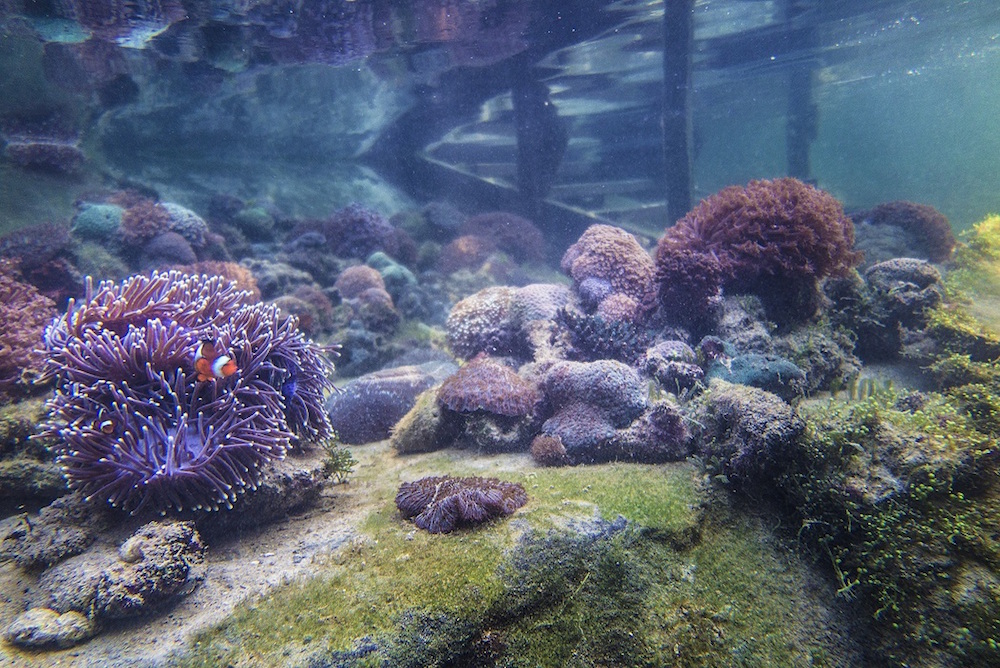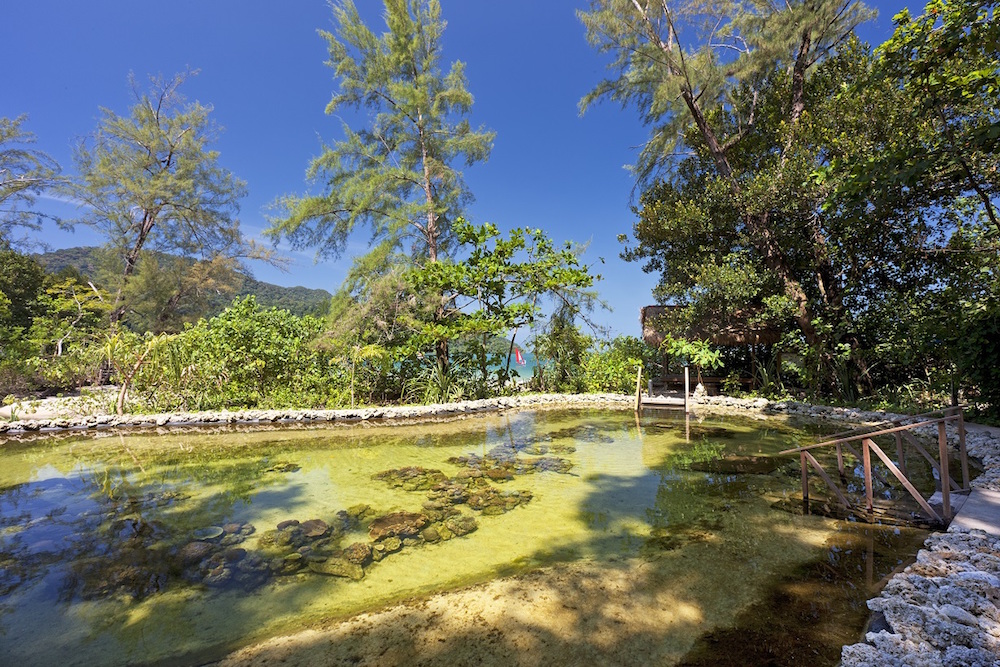 The nursery is a microcosm of a thriving coral reef. – Pic courtesy of Starwood, March 8, 2016.As you take an idyllic stroll on the secluded beach of The Andaman Resort in Langkawi, you'll notice rough, sharp rocks that wash up with the waves.
The nursery is a microcosm of a thriving coral reef. – Pic courtesy of Starwood, March 8, 2016.As you take an idyllic stroll on the secluded beach of The Andaman Resort in Langkawi, you'll notice rough, sharp rocks that wash up with the waves.
These rocks are actually the remnants of a coral reef, part of the larger Andaman ecosystem that is believed to be about 8,000 years old. A rich environment home to thousands of coral species, the reef was devastated by the Indian Ocean earthquake and tsunami that shook the world in 2004.
“The tsunami, which was reportedly 3m to 4m high here in Langkawi, landed right on the reef flat and blew everything away,” said Dr Gerry Goeden, head of marine environment at The Andaman Resort.
The marine biologist said almost 90% of the corals were swept up to shore.
Brought on initially as a consultant to investigate the rocks in the sand and water, Goeden joined The Andaman permanently in 2012 and established its coral nursery, one of the few, if not only, in Southeast Asia.
“We salvage broken or diseased corals that roll in the sand waiting to die and cut them up into smaller pieces to grow again,” he said.
In a process known as coral transplanting, these “coral babies” are rehabilitated in the nursery, a small pool just metres away from the shore. Here, the corals are allowed to grow, eventually forming colonies that are large and healthy enough to be returned to the sea.
Playing an integral role in the coral restoration project is the Artificial Reef Module System, or ARMS. They are blocks of concrete, heavy enough to withstand the waves in the open sea, which will house the corals and provide a place for fish to live.
The ARMS are produced by Lafarge Malaysia in a three-way collaboration between the construction company, The Andaman Resort and Universiti Malaysia Terengganu.
To date, over 50 ARMS have been deployed over an area of 1,000 square metres off the coast with the aim of rejuvenating the coral reef and restoring the marine ecosystem.
 The Andaman Resort Langkawi's coral nursery provides a safe haven for corals to regrow and rehabilitate. – Pic courtesy of Starwood, March 8, 2016.The coral nursery and ARMS project are not only educational but largely collaborative, encouraging active participation in the conservation effort.
The Andaman Resort Langkawi's coral nursery provides a safe haven for corals to regrow and rehabilitate. – Pic courtesy of Starwood, March 8, 2016.The coral nursery and ARMS project are not only educational but largely collaborative, encouraging active participation in the conservation effort.
Guests and visitors to The Andaman have a hand in making mini ARMS, where small pieces of dead coral are combined with cement. These “coral babies” are stuck on the cement using superglue.
“Superglue is a little bit toxic but we're using this on the skeleton of the coral, not the polyps (living tissue),” Goeden said, adding that flower corals work especially well with it.
“The living tissue will eventually grow over the glue.”
The mini ARMS with the “coral babies” sit in the nursery for about two months before they are placed in the ocean to gather nutrients needed and attract fish.
The ‘coral babies’ are stuck onto the mini ARMS using superglue and are set aside to grow. – The Malaysian Insider pic, March 8, 2016.“Conservation is a team effort. I can't save the world, you can't save the world, but together we might just make a difference,” Goeden said.
The hotel also houses a well-equipped marine lab where Goeden works with students from Universiti Malaysia Terengganu to lead research into coral preservation. The lab also serves as a further educational resource for hotel guests on the subject.
“Corals only make up about 0.1% of the sea but houses 25% of marine life, so it’s very important that we keep the reefs healthy and thriving,” he said.
“We can also improve the living standard and nutrition of the local community by restoring the fish supply and hopefully slow the impact of development on the planet.”
He added that the hands-on approach will also benefit the younger generation.
“Kids nowadays grow up with a device in their hand and they rarely ever hold something living,” Goeden said, referring to the corals.
“It (the conservation programmes) might just encourage them to have a little respect for nature.”
To find out more about the coral conservation efforts at The Andaman Resort, Langkawi, just log on to www.theandaman.com/en/coralnursery. – March 8, 2016.

Comments
Please refrain from nicknames or comments of a racist, sexist, personal, vulgar or derogatory nature, or you may risk being blocked from commenting in our website. We encourage commenters to use their real names as their username. As comments are moderated, they may not appear immediately or even on the same day you posted them. We also reserve the right to delete off-topic comments